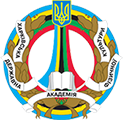- Головна сторінка
- →
- Періодичні видання
- →
- Слобожанський науково-спортивний вісник
- →
- Перегляд матеріалів
JavaScript is disabled for your browser. Some features of this site may not work without it.
Показати скорочений опис матеріалу
| dc.contributor.author | Manar, Bouzoualegh | |
| dc.contributor.author | Adel, Belkadi | |
| dc.contributor.author | Lalia, Cherara | |
| dc.contributor.author | Saddak, Benhammou | |
| dc.date.accessioned | 2023-10-27T08:24:04Z | |
| dc.date.available | 2023-10-27T08:24:04Z | |
| dc.date.issued | 2023-09-30 | |
| dc.identifier.citation | Bouzoualegh Manar, Belkadi Adel, Cherara Lalia, & Benhammou Saddak. (2023). Investigating the Impact of Physiological and Neuromuscular Performance in Highly Trained Judo Athletes of Different Weight Categories. Slobozhanskyi Herald of Science and Sport, 27(3), 118-127. https://doi.org/10.15391/snsv.2023-3.002 | uk |
| dc.identifier.issn | 1991-0177 | |
| dc.identifier.uri | http://repo.khdafk.com.ua/xmlui/handle/123456789/17 | |
| dc.description.abstract | Background and Study Aim This study aimed to investigate the physiological and neuromuscular aspects influencing the performance of highly trained judo athletes across different weight categories. Material and Methods: A total of twenty-one male judokas with an average age of 20.6 ± 1.8 years participated in the study. The participants had an average body mass (MC) of 77.3 ± 13.4 kg and an average height (SH) of 176.5 ± 8.4 cm. The study employed various assessments to evaluate muscle power, judogi strength endurance, special judo fitness, fight simulation, and incremental treadmill tests. Statistical analyses, such as the Shapiro-Wilk test, Pearson's linear correlation, "t" test for dependent samples, and one-way ANOVA, were used. Results: there was significant correlations between the number of throws in the Special Judo Fitness Test (SJFT) and factors such as ANV, PV, and CMJ. However, no significant correlations were observed between Fmax and TMFmax on the dominant and non-dominant sides, as well as LACmax. %FCmax did not show a significant correlation with ANV and DLS. A significant inverse correlation was found between LACmax and VLAn, while no correlation was observed between DLS and VLAn. LACmax values were significantly higher in the medium/medium-heavy category compared to the light/medium-heavy category, and the CMJ was significantly lower in the medium/medium-heavy category compared to the other categories. Conclusion: conclusion, this study determined that muscle power, capacity, and aerobic power were the primary factors influencing the number of throws in the SJFT among highly trained judo athletes. Maximum strength, strength resistance, and glycolytic capacity did not significantly contribute to the number of throws. Athletes with greater aerobic capacity exhibited lower glycolytic demand during fights. these factors can contribute to the development of effective training programs and strategies to optimize performance in judo athletes of various weight categories. | uk |
| dc.language.iso | en | uk |
| dc.publisher | Слобожанський науково-спортивний вісник | uk |
| dc.relation.ispartofseries | 27;3 | |
| dc.title | Investigating the Impact of Physiological and Neuromuscular Performance in Highly Trained Judo Athletes of Different Weight Categories | uk |
| dc.type | Article | uk |
Долучені файли
Даний матеріал зустрічається у наступних розділах
-
Слобожанський науково-спортивний вісник
Журнал містить статті, що відображають матеріали сучасних наукових досліджень у галузі фізичної культури та спорту

